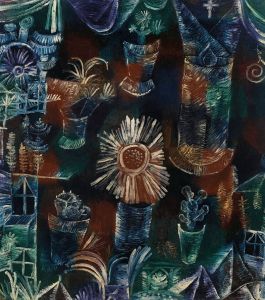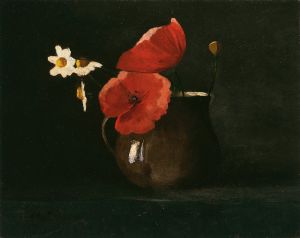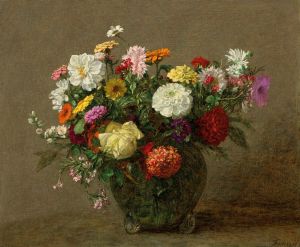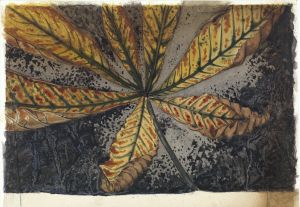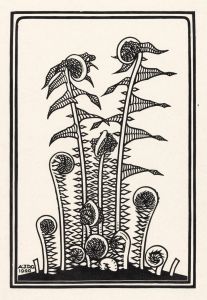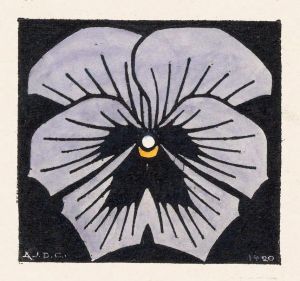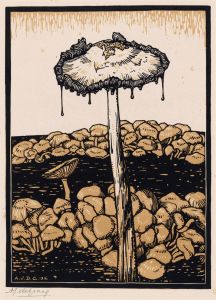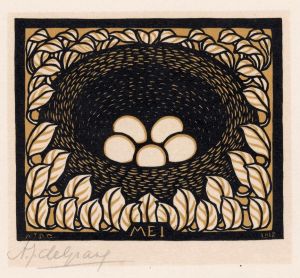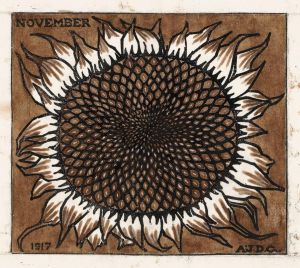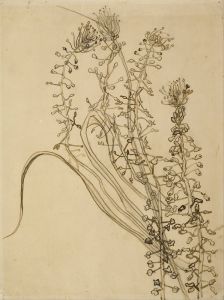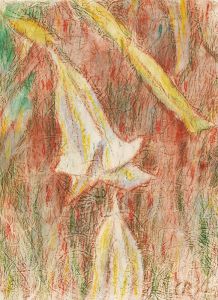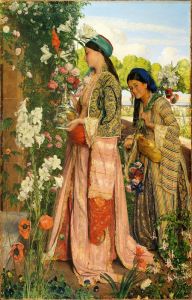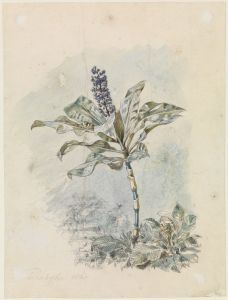
Oost-Indische kers
A hand-painted replica of Julie de Graag’s masterpiece Oost-Indische kers, meticulously crafted by professional artists to capture the true essence of the original. Each piece is created with museum-quality canvas and rare mineral pigments, carefully painted by experienced artists with delicate brushstrokes and rich, layered colors to perfectly recreate the texture of the original artwork. Unlike machine-printed reproductions, this hand-painted version brings the painting to life, infused with the artist’s emotions and skill in every stroke. Whether for personal collection or home decoration, it instantly elevates the artistic atmosphere of any space.
Julie de Graag was a Dutch artist known for her distinctive style and contributions to the art world during the early 20th century. One of her notable works is "Oost-Indische kers," which translates to "Nasturtiums" in English. This artwork exemplifies her unique approach to art, characterized by a focus on nature and a meticulous attention to detail.
Julie de Graag was born on March 18, 1877, in Gorinchem, Netherlands. She studied at the Royal Academy of Art in The Hague, where she honed her skills and developed her artistic vision. De Graag was part of the Art Nouveau movement, which was known for its emphasis on organic forms and intricate designs. Her work often featured elements of nature, including plants and animals, rendered with precision and a keen eye for detail.
"Oost-Indische kers" is a testament to de Graag's fascination with the natural world. The painting depicts nasturtiums, a type of flowering plant known for its vibrant colors and distinctive shape. De Graag's portrayal of these flowers is both realistic and stylized, capturing their essence while also emphasizing their aesthetic qualities. The composition is carefully balanced, with each element thoughtfully placed to create a harmonious whole.
De Graag's technique in "Oost-Indische kers" reflects her background in graphic arts. She often employed a linear style, using clear outlines and flat areas of color to define her subjects. This approach is evident in the painting, where the nasturtiums are delineated with crisp lines and filled with rich, saturated hues. The use of color is particularly striking, with the warm tones of the flowers contrasting against a more subdued background, drawing the viewer's attention to the central motif.
Throughout her career, Julie de Graag was influenced by various artistic movements and contemporaries, yet she maintained a distinct voice in her work. Her art was not only a reflection of her personal interests but also a response to the broader cultural and artistic trends of her time. Despite facing challenges in her personal life, including health issues, de Graag remained dedicated to her craft, producing a body of work that continues to be appreciated for its beauty and technical skill.
"Oost-Indische kers" is an example of de Graag's ability to transform simple subjects into works of art that resonate with viewers. Her attention to detail and mastery of form and color make this painting a noteworthy piece within her oeuvre. Today, Julie de Graag's work is recognized for its contribution to Dutch art and its embodiment of the Art Nouveau style.
In summary, "Oost-Indische kers" by Julie de Graag is a significant work that highlights the artist's skill and her deep appreciation for the natural world. Through her precise technique and thoughtful composition, de Graag captures the beauty of nasturtiums, creating a piece that is both visually appealing and artistically significant. Her legacy as an artist endures, with her works continuing to inspire and captivate audiences.





